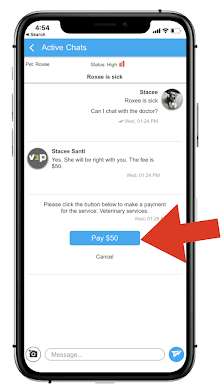Culture and leadership are now common words used in veterinary management literature. Many articles state how important these are, but what else contributes to building a positive culture besides leadership? If culture is defined as shared values and working towards a common goal, shouldn’t the rest of the team be involved in building the culture? Or does the responsibility lie exclusively with leadership to form a great culture? Could great leadership combined with empowerment be the key?
While I agree that having a great culture starts with leadership, the entire team does contribute —especially when they have been provided with the right tools to do so. What tools, you might ask? That is a great question! Let’s first start with the WHY behind empowerment.
It all starts with team empowerment
First and foremost, every team member must have an understanding of the common goals of the organization. This is likely defined through the vision and mission of the practice. But does each employee have a clear understanding on how they individually contribute to the goals? Let me be clear, I’m not asking if you the leader has defined these goals. In order for each person on your team to know how they contribute to the goals; they must be a participant in goal and role discovery. They must identify with WHAT. As the leader, you provide guidance to get to that discovery.
How empowerment ties into the Discovery
It is important to define empowerment, which is often mistakenly interchanged with delegation. Empowerment and delegation are two different terms. When a task is delegated, you are asking another person to not think on their own about what needs to be completed— you are telling them what to do. When tasks are delegated, the delegator often leaves off the explanation—the “why” the task is important—and only provides the “what needs to be done, and how to do it”. [bctt tweet=”When you empower a person, you are asking them to think on their own to complete a goal that helps achieve the larger goals of the organization.”] [bctt tweet=”Empowering team members to carry out job duties on a daily basis to meet and exceed practice goals builds culture.”] Delegation simply breaks down culture as it strips team members from having the ability to autonomously work towards the common goal.
Successful empowerment requires training in the skills needed
One more caveat to discovery. You can’t empower successfully without technical competence. Your team needs to have the necessary training in order to carry out the job duties of their positions to meet the greater goals of the practice. Learning the “what, why, when, where and how” is critical in arming them with the tools to make the right decision every time. If instead they are only taught to do and not think, then they are not being encouraged to think on their own and problem solve. That is not empowerment—that is delegation.
Therefore, empowerment gives individuals permission to act on the technical competence they have acquired, without asking for permission to act. This leads to the next big question: how often do you create opportunities for your team to learn? Is learning forced upon them or do they want to learn? Forcing learning on employees versus employees wanting to learn is a clear indicator of the culture of the practice. Is your practice a learning organization or a dictatorship?
Give your team autonomy to think bigger and to achieve the goals of the practice without micromanaging. Empowered team members are more loyal and dedicated to the practice. They maintain their own accountability, they problem-solve proactively, and they make clients happy.
[bctt tweet=”Happy teams = happy clients. Rate your culture and empowerment levels today.”]
Heather Prendergast, RVT, CVPM, SPHR is the Director of Education at Encore Veterinary Group. She lectures nationally and has authored a book authored and several articles on leadership and management structure in the veterinary practice. She can be reached at [email protected]



